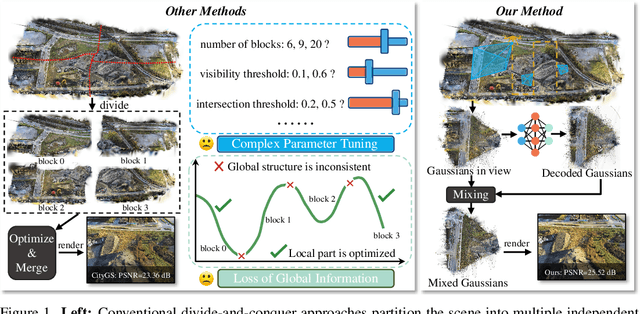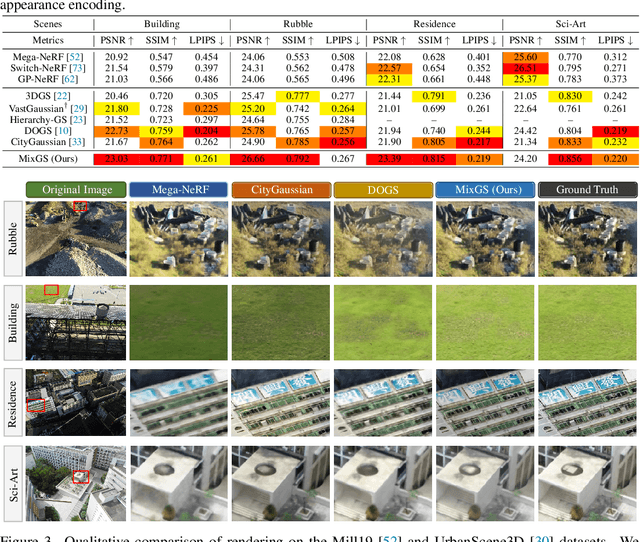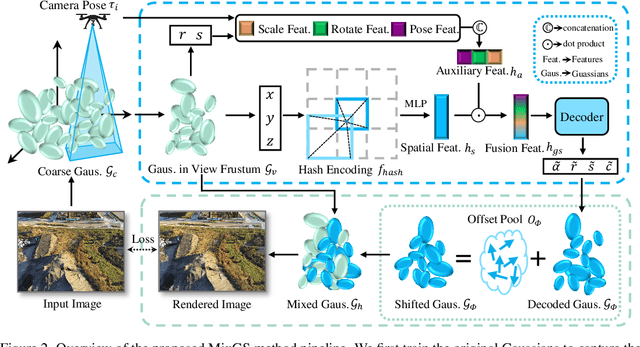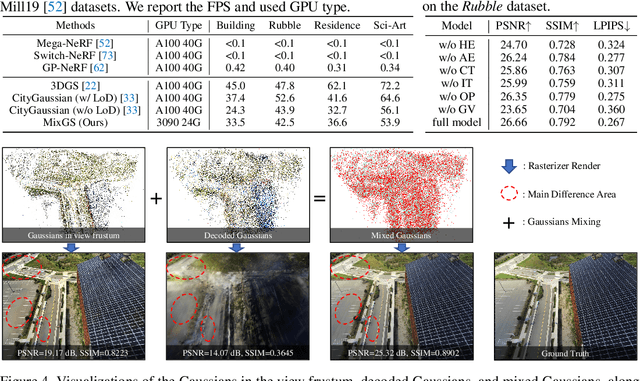Lei Yu
Expression
In-Context Probing for Membership Inference in Fine-Tuned Language Models
Dec 21, 2025Abstract:Membership inference attacks (MIAs) pose a critical privacy threat to fine-tuned large language models (LLMs), especially when models are adapted to domain-specific tasks using sensitive data. While prior black-box MIA techniques rely on confidence scores or token likelihoods, these signals are often entangled with a sample's intrinsic properties - such as content difficulty or rarity - leading to poor generalization and low signal-to-noise ratios. In this paper, we propose ICP-MIA, a novel MIA framework grounded in the theory of training dynamics, particularly the phenomenon of diminishing returns during optimization. We introduce the Optimization Gap as a fundamental signal of membership: at convergence, member samples exhibit minimal remaining loss-reduction potential, while non-members retain significant potential for further optimization. To estimate this gap in a black-box setting, we propose In-Context Probing (ICP), a training-free method that simulates fine-tuning-like behavior via strategically constructed input contexts. We propose two probing strategies: reference-data-based (using semantically similar public samples) and self-perturbation (via masking or generation). Experiments on three tasks and multiple LLMs show that ICP-MIA significantly outperforms prior black-box MIAs, particularly at low false positive rates. We further analyze how reference data alignment, model type, PEFT configurations, and training schedules affect attack effectiveness. Our findings establish ICP-MIA as a practical and theoretically grounded framework for auditing privacy risks in deployed LLMs.
GenePheno: Interpretable Gene Knockout-Induced Phenotype Abnormality Prediction from Gene Sequences
Nov 14, 2025Abstract:Exploring how genetic sequences shape phenotypes is a fundamental challenge in biology and a key step toward scalable, hypothesis-driven experimentation. The task is complicated by the large modality gap between sequences and phenotypes, as well as the pleiotropic nature of gene-phenotype relationships. Existing sequence-based efforts focus on the degree to which variants of specific genes alter a limited set of phenotypes, while general gene knockout induced phenotype abnormality prediction methods heavily rely on curated genetic information as inputs, which limits scalability and generalizability. As a result, the task of broadly predicting the presence of multiple phenotype abnormalities under gene knockout directly from gene sequences remains underexplored. We introduce GenePheno, the first interpretable multi-label prediction framework that predicts knockout induced phenotypic abnormalities from gene sequences. GenePheno employs a contrastive multi-label learning objective that captures inter-phenotype correlations, complemented by an exclusive regularization that enforces biological consistency. It further incorporates a gene function bottleneck layer, offering human interpretable concepts that reflect functional mechanisms behind phenotype formation. To support progress in this area, we curate four datasets with canonical gene sequences as input and multi-label phenotypic abnormalities induced by gene knockouts as targets. Across these datasets, GenePheno achieves state-of-the-art gene-centric $F_{\text{max}}$ and phenotype-centric AUC, and case studies demonstrate its ability to reveal gene functional mechanisms.
SEDM: Scalable Self-Evolving Distributed Memory for Agents
Sep 11, 2025Abstract:Long-term multi-agent systems inevitably generate vast amounts of trajectories and historical interactions, which makes efficient memory management essential for both performance and scalability. Existing methods typically depend on vector retrieval and hierarchical storage, yet they are prone to noise accumulation, uncontrolled memory expansion, and limited generalization across domains. To address these challenges, we present SEDM, Self-Evolving Distributed Memory, a verifiable and adaptive framework that transforms memory from a passive repository into an active, self-optimizing component. SEDM integrates verifiable write admission based on reproducible replay, a self-scheduling memory controller that dynamically ranks and consolidates entries according to empirical utility, and cross-domain knowledge diffusion that abstracts reusable insights to support transfer across heterogeneous tasks. Evaluations on benchmark datasets demonstrate that SEDM improves reasoning accuracy while reducing token overhead compared with strong memory baselines, and further enables knowledge distilled from fact verification to enhance multi-hop reasoning. The results highlight SEDM as a scalable and sustainable memory mechanism for open-ended multi-agent collaboration. The code will be released in the later stage of this project.
EVDI++: Event-based Video Deblurring and Interpolation via Self-Supervised Learning
Sep 10, 2025



Abstract:Frame-based cameras with extended exposure times often produce perceptible visual blurring and information loss between frames, significantly degrading video quality. To address this challenge, we introduce EVDI++, a unified self-supervised framework for Event-based Video Deblurring and Interpolation that leverages the high temporal resolution of event cameras to mitigate motion blur and enable intermediate frame prediction. Specifically, the Learnable Double Integral (LDI) network is designed to estimate the mapping relation between reference frames and sharp latent images. Then, we refine the coarse results and optimize overall training efficiency by introducing a learning-based division reconstruction module, enabling images to be converted with varying exposure intervals. We devise an adaptive parameter-free fusion strategy to obtain the final results, utilizing the confidence embedded in the LDI outputs of concurrent events. A self-supervised learning framework is proposed to enable network training with real-world blurry videos and events by exploring the mutual constraints among blurry frames, latent images, and event streams. We further construct a dataset with real-world blurry images and events using a DAVIS346c camera, demonstrating the generalizability of the proposed EVDI++ in real-world scenarios. Extensive experiments on both synthetic and real-world datasets show that our method achieves state-of-the-art performance in video deblurring and interpolation tasks.
Undress to Redress: A Training-Free Framework for Virtual Try-On
Aug 11, 2025Abstract:Virtual try-on (VTON) is a crucial task for enhancing user experience in online shopping by generating realistic garment previews on personal photos. Although existing methods have achieved impressive results, they struggle with long-sleeve-to-short-sleeve conversions-a common and practical scenario-often producing unrealistic outputs when exposed skin is underrepresented in the original image. We argue that this challenge arises from the ''majority'' completion rule in current VTON models, which leads to inaccurate skin restoration in such cases. To address this, we propose UR-VTON (Undress-Redress Virtual Try-ON), a novel, training-free framework that can be seamlessly integrated with any existing VTON method. UR-VTON introduces an ''undress-to-redress'' mechanism: it first reveals the user's torso by virtually ''undressing,'' then applies the target short-sleeve garment, effectively decomposing the conversion into two more manageable steps. Additionally, we incorporate Dynamic Classifier-Free Guidance scheduling to balance diversity and image quality during DDPM sampling, and employ Structural Refiner to enhance detail fidelity using high-frequency cues. Finally, we present LS-TON, a new benchmark for long-sleeve-to-short-sleeve try-on. Extensive experiments demonstrate that UR-VTON outperforms state-of-the-art methods in both detail preservation and image quality. Code will be released upon acceptance.
SenseCrypt: Sensitivity-guided Selective Homomorphic Encryption for Joint Federated Learning in Cross-Device Scenarios
Aug 06, 2025Abstract:Homomorphic Encryption (HE) prevails in securing Federated Learning (FL), but suffers from high overhead and adaptation cost. Selective HE methods, which partially encrypt model parameters by a global mask, are expected to protect privacy with reduced overhead and easy adaptation. However, in cross-device scenarios with heterogeneous data and system capabilities, traditional Selective HE methods deteriorate client straggling, and suffer from degraded HE overhead reduction performance. Accordingly, we propose SenseCrypt, a Sensitivity-guided selective Homomorphic EnCryption framework, to adaptively balance security and HE overhead per cross-device FL client. Given the observation that model parameter sensitivity is effective for measuring clients' data distribution similarity, we first design a privacy-preserving method to respectively cluster the clients with similar data distributions. Then, we develop a scoring mechanism to deduce the straggler-free ratio of model parameters that can be encrypted by each client per cluster. Finally, for each client, we formulate and solve a multi-objective model parameter selection optimization problem, which minimizes HE overhead while maximizing model security without causing straggling. Experiments demonstrate that SenseCrypt ensures security against the state-of-the-art inversion attacks, while achieving normal model accuracy as on IID data, and reducing training time by 58.4%-88.7% as compared to traditional HE methods.
SAEL: Leveraging Large Language Models with Adaptive Mixture-of-Experts for Smart Contract Vulnerability Detection
Jul 30, 2025Abstract:With the increasing security issues in blockchain, smart contract vulnerability detection has become a research focus. Existing vulnerability detection methods have their limitations: 1) Static analysis methods struggle with complex scenarios. 2) Methods based on specialized pre-trained models perform well on specific datasets but have limited generalization capabilities. In contrast, general-purpose Large Language Models (LLMs) demonstrate impressive ability in adapting to new vulnerability patterns. However, they often underperform on specific vulnerability types compared to methods based on specialized pre-trained models. We also observe that explanations generated by general-purpose LLMs can provide fine-grained code understanding information, contributing to improved detection performance. Inspired by these observations, we propose SAEL, an LLM-based framework for smart contract vulnerability detection. We first design targeted prompts to guide LLMs in identifying vulnerabilities and generating explanations, which serve as prediction features. Next, we apply prompt-tuning on CodeT5 and T5 to process contract code and explanations, enhancing task-specific performance. To combine the strengths of each approach, we introduce an Adaptive Mixture-of-Experts architecture. This dynamically adjusts feature weights via a Gating Network, which selects relevant features using TopK filtering and Softmax normalization, and incorporates a Multi-Head Self-Attention mechanism to enhance cross-feature relationships. This design enables effective integration of LLM predictions, explanation features, and code features through gradient optimization. The loss function jointly considers both independent feature performance and overall weighted predictions. Experiments show that SAEL outperforms existing methods across various vulnerabilities.
CasP: Improving Semi-Dense Feature Matching Pipeline Leveraging Cascaded Correspondence Priors for Guidance
Jul 23, 2025Abstract:Semi-dense feature matching methods have shown strong performance in challenging scenarios. However, the existing pipeline relies on a global search across the entire feature map to establish coarse matches, limiting further improvements in accuracy and efficiency. Motivated by this limitation, we propose a novel pipeline, CasP, which leverages cascaded correspondence priors for guidance. Specifically, the matching stage is decomposed into two progressive phases, bridged by a region-based selective cross-attention mechanism designed to enhance feature discriminability. In the second phase, one-to-one matches are determined by restricting the search range to the one-to-many prior areas identified in the first phase. Additionally, this pipeline benefits from incorporating high-level features, which helps reduce the computational costs of low-level feature extraction. The acceleration gains of CasP increase with higher resolution, and our lite model achieves a speedup of $\sim2.2\times$ at a resolution of 1152 compared to the most efficient method, ELoFTR. Furthermore, extensive experiments demonstrate its superiority in geometric estimation, particularly with impressive cross-domain generalization. These advantages highlight its potential for latency-sensitive and high-robustness applications, such as SLAM and UAV systems. Code is available at https://github.com/pq-chen/CasP.
Holistic Large-Scale Scene Reconstruction via Mixed Gaussian Splatting
May 29, 2025



Abstract:Recent advances in 3D Gaussian Splatting have shown remarkable potential for novel view synthesis. However, most existing large-scale scene reconstruction methods rely on the divide-and-conquer paradigm, which often leads to the loss of global scene information and requires complex parameter tuning due to scene partitioning and local optimization. To address these limitations, we propose MixGS, a novel holistic optimization framework for large-scale 3D scene reconstruction. MixGS models the entire scene holistically by integrating camera pose and Gaussian attributes into a view-aware representation, which is decoded into fine-detailed Gaussians. Furthermore, a novel mixing operation combines decoded and original Gaussians to jointly preserve global coherence and local fidelity. Extensive experiments on large-scale scenes demonstrate that MixGS achieves state-of-the-art rendering quality and competitive speed, while significantly reducing computational requirements, enabling large-scale scene reconstruction training on a single 24GB VRAM GPU. The code will be released at https://github.com/azhuantou/MixGS.
MTGR: Industrial-Scale Generative Recommendation Framework in Meituan
May 24, 2025Abstract:Scaling law has been extensively validated in many domains such as natural language processing and computer vision. In the recommendation system, recent work has adopted generative recommendations to achieve scalability, but their generative approaches require abandoning the carefully constructed cross features of traditional recommendation models. We found that this approach significantly degrades model performance, and scaling up cannot compensate for it at all. In this paper, we propose MTGR (Meituan Generative Recommendation) to address this issue. MTGR is modeling based on the HSTU architecture and can retain the original deep learning recommendation model (DLRM) features, including cross features. Additionally, MTGR achieves training and inference acceleration through user-level compression to ensure efficient scaling. We also propose Group-Layer Normalization (GLN) to enhance the performance of encoding within different semantic spaces and the dynamic masking strategy to avoid information leakage. We further optimize the training frameworks, enabling support for our models with 10 to 100 times computational complexity compared to the DLRM, without significant cost increases. MTGR achieved 65x FLOPs for single-sample forward inference compared to the DLRM model, resulting in the largest gain in nearly two years both offline and online. This breakthrough was successfully deployed on Meituan, the world's largest food delivery platform, where it has been handling the main traffic.
 Add to Chrome
Add to Chrome Add to Firefox
Add to Firefox Add to Edge
Add to Edge